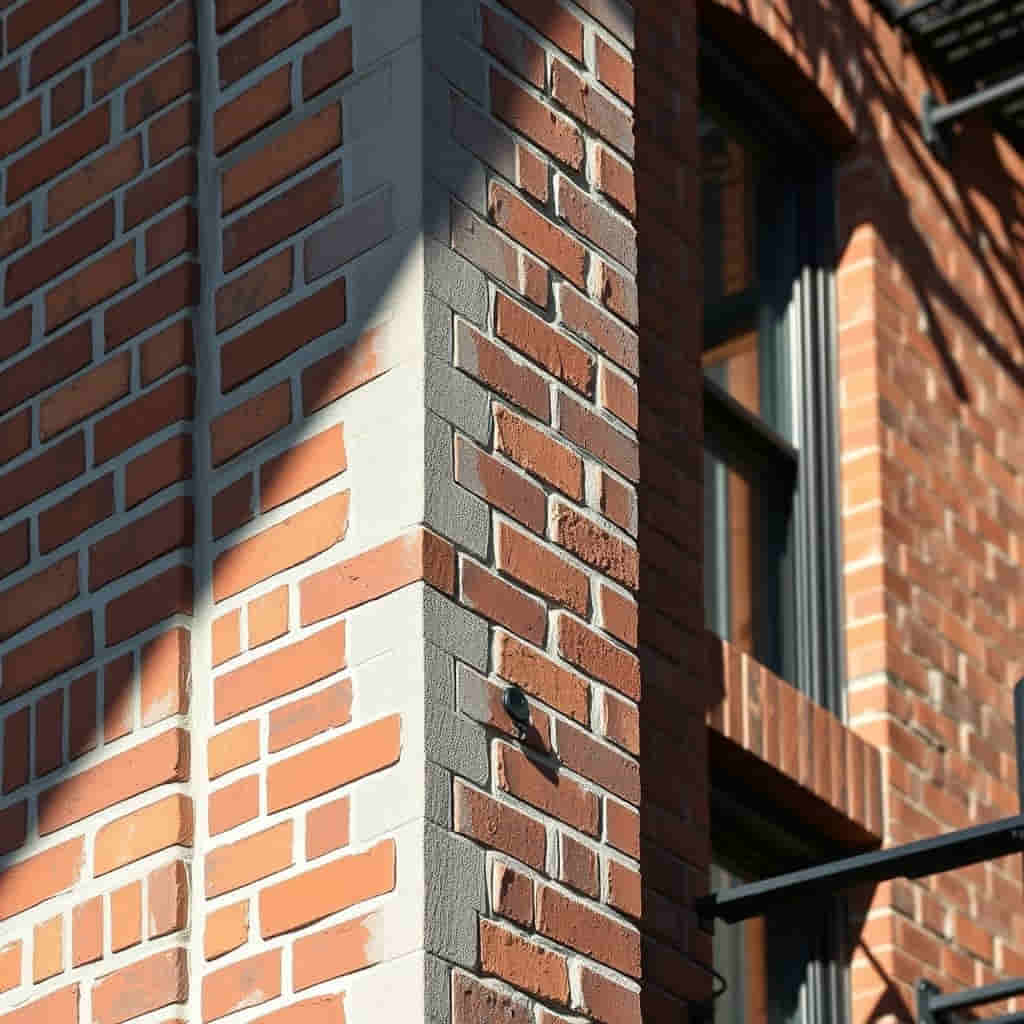When Do You Need Brick Pointing? Signs of Wear in Your Walls
The Bronx is home to some of the most historic and beautifully crafted brick buildings in New York City. But those brick facades and walls that define the charm of many homes and apartments won’t last forever—at least not without proper maintenance. If you’ve started to notice cracks in the mortar, gaps between bricks, or even water stains on your interior walls, it might be time for brick pointing in Bronx, NY.
Neglecting brick pointing can lead to costly repairs, structural instability, and serious water damage. The good news? Addressing the issue early can save thousands of dollars and extend the life of your brickwork.
What is Brick Pointing?
Brick pointing, also known as repointing, is the process of repairing and replacing deteriorating mortar joints between bricks. Over time, weather conditions, moisture, and general wear cause mortar to weaken and crumble, leaving bricks vulnerable to damage. Skilled masons remove the old mortar and replace it with fresh mortar that matches the original structure, strengthening the wall and restoring its aesthetic appeal.
Why is Brick Pointing Essential?
- Structural Integrity – The mortar holds the bricks together. Once it starts failing, bricks become loose, and walls weaken, increasing the risk of collapses in severe cases.
- Water Damage Prevention – Gaps in mortar allow moisture to seep in, leading to leaks, mold growth, and costly interior damage.
- Energy Efficiency – Crumbling mortar creates air gaps that reduce insulation, making it harder to keep a home warm in winter and cool in summer.
- Property Value & Curb Appeal – Cracked and deteriorating brickwork looks neglected, affecting a home’s resale value and first impressions.
- Legal Compliance in NYC – The NYC Department of Buildings enforces strict codes on masonry repairs, especially for multi-story buildings. Ignoring deteriorating brickwork can result in violations and fines.
Signs Your Brick Walls Need Pointing
Waiting too long to address brick pointing in Bronx can lead to expensive full-wall replacements. Here’s what to look for:
- Cracks in Mortar – Visible cracks or crumbling joints between bricks indicate aging and deterioration.
- Gaps or Missing Mortar – If pieces of mortar are missing or gaps have formed, moisture can easily penetrate the structure.
- Efflorescence (White Powdery Deposits) – This is a sign that water has seeped into the bricks, carrying minerals to the surface.
- Loose or Shifting Bricks – If bricks feel loose or move when touched, the mortar has significantly weakened.
- Moisture Stains on Interior Walls – Water penetrating through damaged mortar can cause stains, peeling paint, or even mold inside your home.
- Spalling (Flaking or Chipping Bricks) – This occurs when water damage causes the brick’s outer layers to break apart, compromising its strength.
Why Ignoring These Signs is a Costly Mistake
Homeowners often overlook minor cracks, thinking repairs can wait. But delaying brick pointing can lead to severe issues, including:
1. Structural Instability
When mortar deteriorates, it no longer holds the bricks together. This can lead to bowing walls, brick displacement, and even collapses in extreme cases.
2. Water Damage & Mold Growth
Brickwork is your home’s first line of defense against the elements. Once water gets in, it can rot wooden beams, weaken the foundation, and create mold problems that affect indoor air quality.
3. Expensive Repairs Down the Line
A minor brick pointing job is relatively affordable compared to a full wall reconstruction. The longer the damage is ignored, the more extensive—and costly—the repairs become.
4. Legal & Safety Issues
New York City enforces strict building maintenance codes. If an inspector finds unsafe brickwork on your property, you could be hit with fines or forced to undergo emergency repairs at a high cost.
DIY Brick Pointing vs. Hiring a Professional: What You Need to Know
Some homeowners attempt to repair brickwork themselves, but brick pointing is not a DIY job. Here’s why hiring a professional is the best choice:
Risks of DIY Brick Pointing
- Incorrect Mortar Mix – Using the wrong type of mortar can cause bricks to crack and deteriorate faster.
- Lack of Proper Tools – Repointing requires precision tools to remove old mortar without damaging bricks.
- Inconsistent Application – Uneven mortar application weakens the bond and reduces the lifespan of the repair.
- No Long-Term Warranty – Professional masons offer warranties on their work, ensuring durability.
Why Professionals Deliver Better Results
- Proper Assessment – Professionals determine the right mortar type and technique based on the existing structure.
- Seamless Aesthetic Matching – Skilled masons match the color, texture, and composition of the original mortar for a natural finish.
- Longer-Lasting Repairs – A correctly done pointing job can last 25+ years, saving money in the long run.
- Code Compliance – Licensed contractors ensure that all repairs meet NYC building codes and safety standards.
How Often Should You Inspect Your Brickwork?
Regular inspections help catch small issues before they turn into costly repairs. Homeowners and property managers in Bronx, NY should:
- Inspect brickwork at least once a year, preferably in the spring or fall.
- Check after heavy storms or freezing winters, as moisture expansion can weaken mortar.
- Hire a masonry expert every 5-10 years for a thorough assessment, even if there are no visible issues.
Factors like building age, exposure to pollution, and past repairs can affect how frequently brick pointing is needed. Older buildings, especially those in high-traffic or high-moisture areas, may require more frequent maintenance.
Take Action Before It’s Too Late
If you notice cracks, loose bricks, or moisture stains in your home’s masonry, don’t wait until the damage worsens. Timely brick pointing can save thousands of dollars, prevent legal issues, and keep your home safe and beautiful for years to come.
For expert brick pointing in Bronx, NY, reach out to a professional masonry contractor who understands the unique challenges of maintaining brick structures in New York’s climate. Investing in high-quality repairs now ensures a stronger, safer, and more valuable property in the long run.


